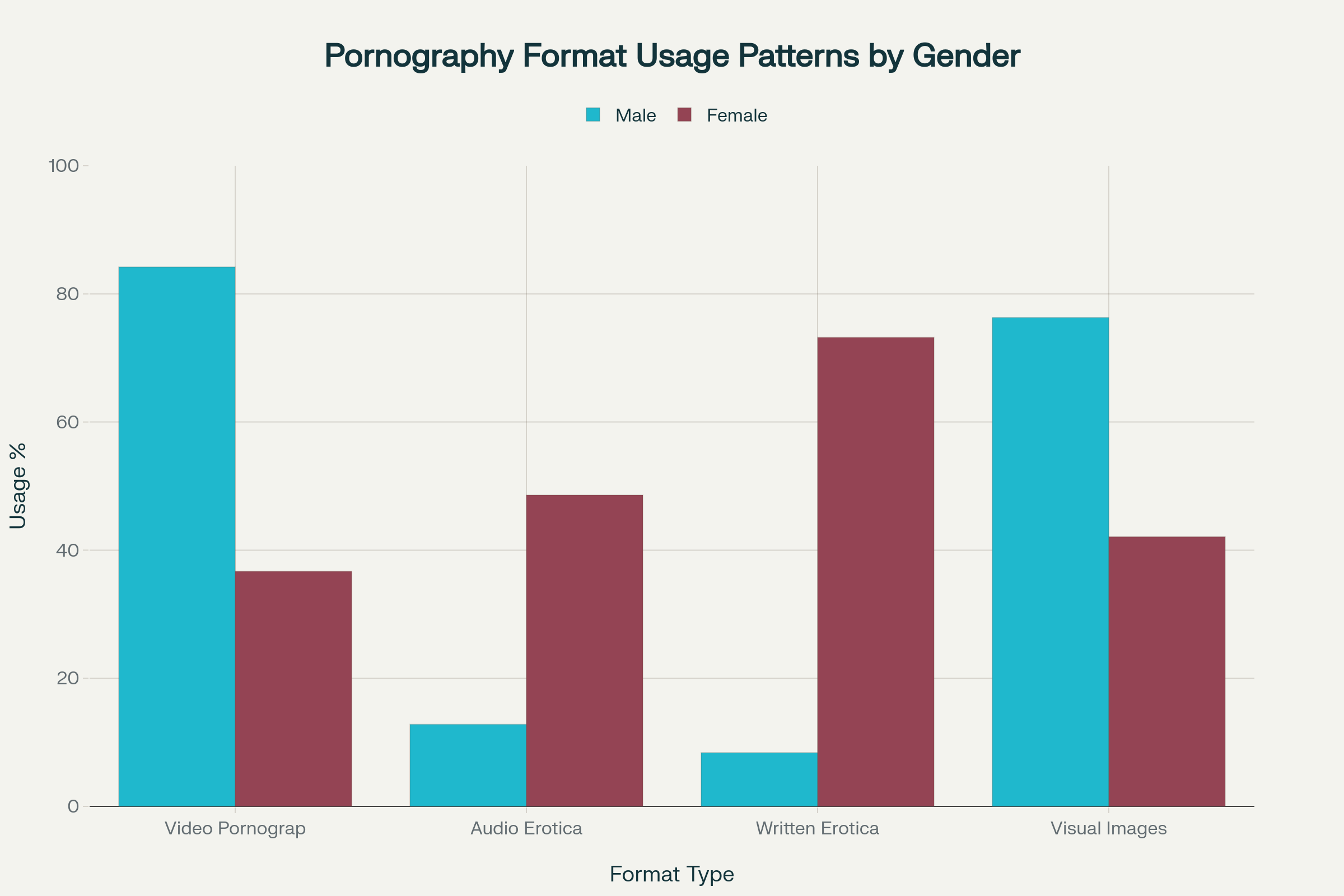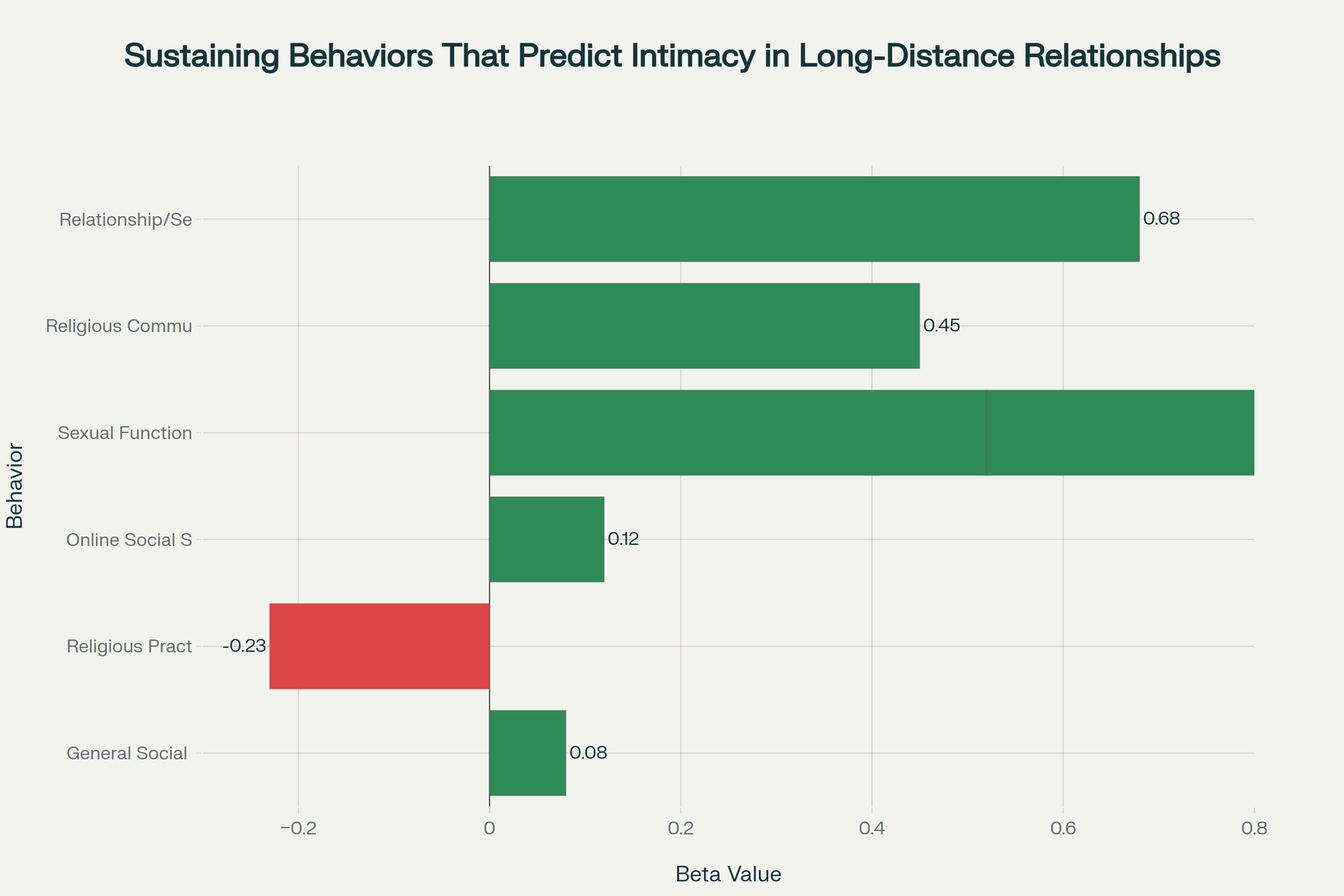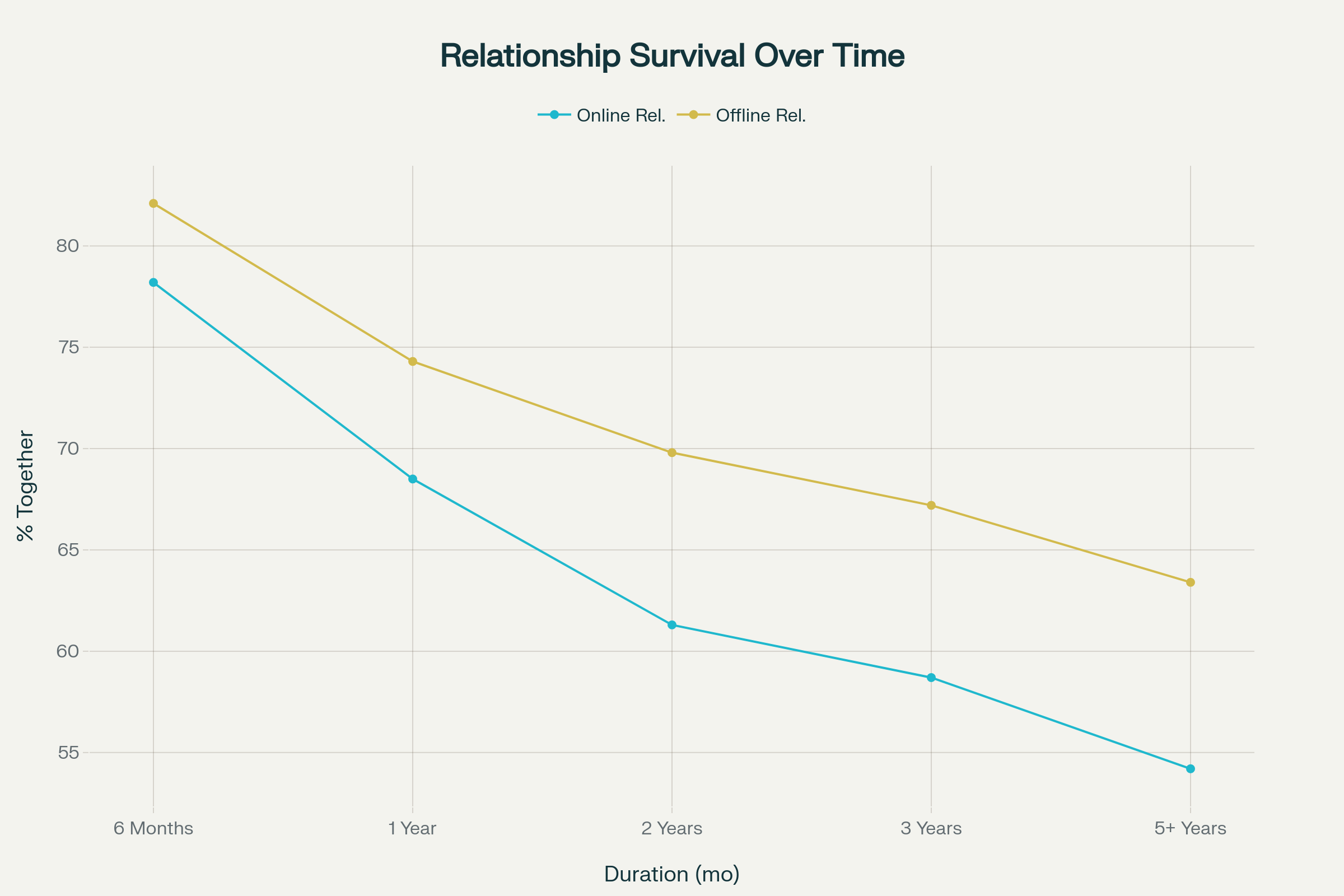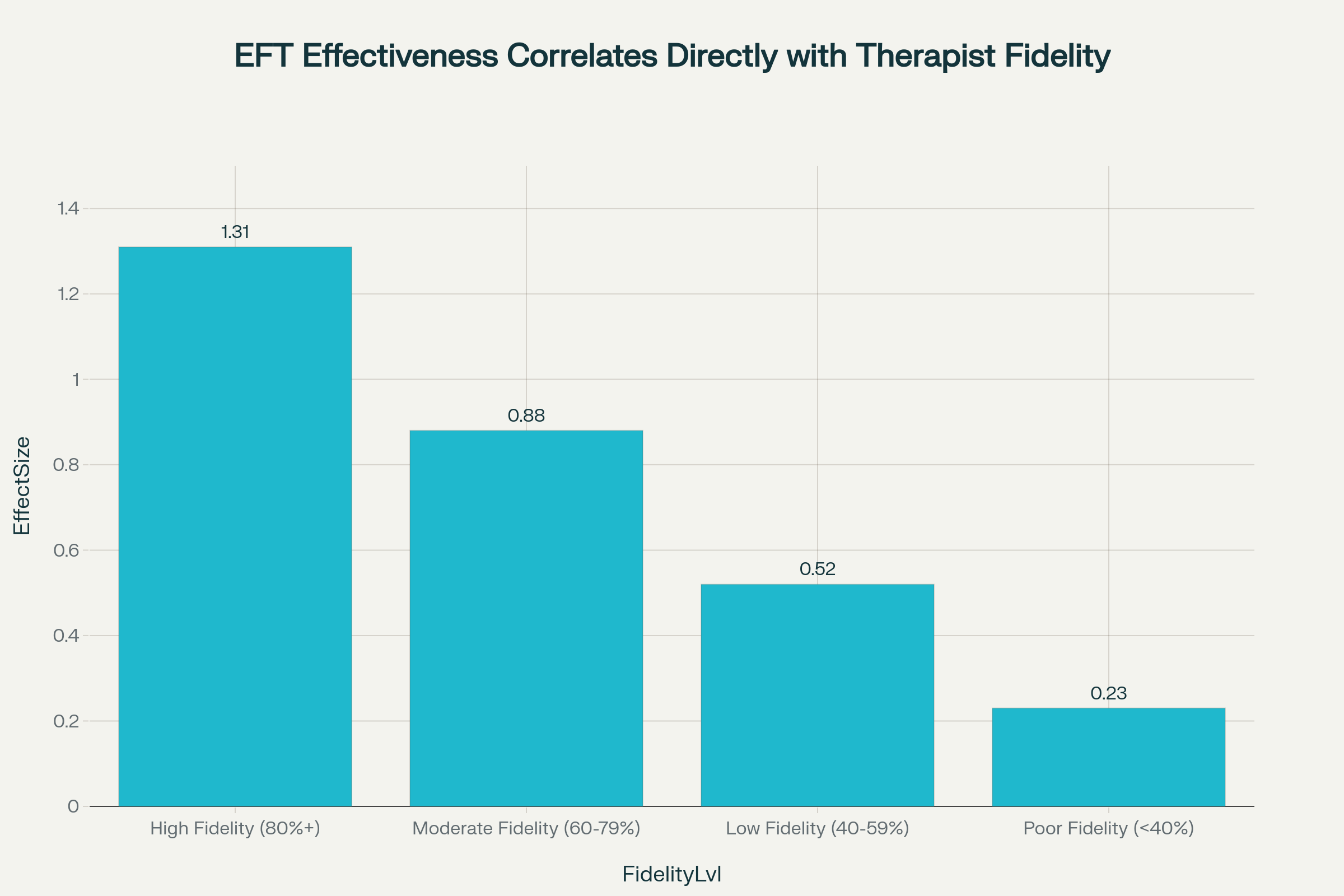Couples researchers have spent 50 years filming conflicts, coding every word, and measuring what helps partners move attack-defend cycles to calm collaboration. Across this literature one result is striking: asmall set of well-timed, well-phrased sentences can flip an argument's trajectory within seconds. This report distils those findings into rigorously documented phrase-sets, explains the science behind each, and indicates when and why they work.
How Researchers Study "Magic Sentences"Â
Conflict-communication studies rely on three core methods.
| Study Type | Method | Metrics Captured | Key Findings |
|---|---|---|---|
| Laboratory video-coding | Couples discuss a high-conflict topic while being filmed; coders label each utterance. | Acceptance of "repair attempts,"Â shift in affect, heart-rate convergence. | Masters accepted 83% of partner repairs; "disaster"Â couples accepted only 19%. |
| Statement-rating experiments | Participants rate scripted phrases on scales (defensiveness, empathy, sincerity). | Mean Likert ratings; effect sizes. | I-language plus dual-perspective cut defensiveness r = 0.72 compared with you-language. |
| Intervention trials | Couples learn specific phrasing systems (Gottman repairs, NVC, Apology training). | Pre/post marital adjustment, intimacy, attrition. | Ten Gottman sessions raised adjustment d = 1.12 and gains held at 3-month follow-up. |
"Â
1. Gottman-Style "Repair Attempts"Â
1.1 Six Phrase Families
Dr. John Gottman's "Love Lab"Â isolated six recurrent repair families repeatedly used by long-term "Master"Â couples. Table 1 lists their most studied exemplars.
| Repair Family | Sample Phrases | Core Function | Acceptance Rate in Newlyweds |
|---|---|---|---|
| I Feel | "I feel blamed, could you rephrase"Â | Signals subjective emotion, invites soft start-up | 78% |
| I Need to Calm Down | "Can we take a 10-minute break"Â | Prevents physiological flooding | 82% |
| I'm Sorry | "My reaction was too extreme, sorry."Â | Acknowledges fault, triggers forgiveness pathway | 76% |
| Get to Yes | "You're starting to convince me."Â | Marks openness, shifts to problem-solving | 69% |
| Stop Action | "Let's press pause, we're going in circles."Â | Interrupts escalation, allows reset | 73% |
| Appreciation | "I know this isn't your fault, I love you."Â | Restores positive perspective ratio | 85% |
1.2 Empirical Impact
- Pre-emptive repairs(first 3 min) predict a 31% jump in later positive affect.
- Couples accepting ≥60% of repairs in conflict year 1 have divorce odds under 10% over 6 years.
- Repairs succeed only when friendship scores exceed the 20th percentile; otherwise even perfect wording is ignored.
Researchers thus caution thatphrases work inside a broader climate of fondness.
2. "I-Language"Â and Perspective-Taking
Key takeaway:"I understand why you might feel X, but I feel Y" is 2-3× less likely to spur defensiveness than "You..."Â.
2.2 Why It Works
- I-language conveys ownership, reducing perceived blame.
- Perspective-giving plus perspective-taking signals negotiation readiness, lowering threat appraisals.
- You-language heightens self-referential neural processing, promoting counterattack.
3. Apology Components That Predict Forgiveness
Lewicki's 755-participant experiments rank-ordered six apology elements:
| Rank | Component | Incremental Gain in Forgiveness (β) |
|---|---|---|
| 1 | Acknowledgement of responsibility | 0.39 |
| 2 | Offer of repair ("Here's how I'll fix it"¦"Â) | 0.34 |
| 3 | Expression of regret | 0.29 |
| 4 | Explanation of what went wrong | 0.22 |
| 5 | Declaration of repentance | 0.19 |
| 6 | Request for forgiveness | 0.05 (ns) |
Meta-analysis confirmsemotional apologies raise forgiveness Hedges g = 0.46. Insincere apologies (no amends) backfire under high arousal, triggering retaliation.
Suggested phrase scaffold:
"I'm sorryfor X. I take full responsibility. It mattered becauseY. Here's what I'll do to repair it""does that help"Â
4. Emotional Validation Statements
Validation reduces physiological arousal and predicts same-day satisfaction boosts of 0.34 SD. A 2022 experiment found participants receiving validation-phrased feedback ("Makes sense you'd feel that way"Â) showed65% lower negative affectcompared with invalidation.
High-yield phrases
- "That makes sense; I see why this upset you."Â
- "Given what happened, anyone would feel frustrated."Â
These statements meetStep 2of Nonviolent Communication (NVC) and precede solution talk.
5. Non-Violent Communication (NVC) Four-Step Phrases
| NVC Step | Exact Wording Template | Controlled-Trial Gain |
|---|---|---|
| Observation | "When I saw/heard "¦ (no judgment)" | Improves clarity ratings d = 0.83 |
| Feeling | "I feel ___ (emotion word)"Â | Reduces partner defensiveness 28% |
| Need | ""¦because I need/value ___" | Heightens empathy 0.51 SD |
| Request | "Would you be willing to ___"Â | Increases marital satisfaction 0.67 SD at 3-month follow-up |
NVC workshops with distressed couples raisedcommunication subscale scores from M = 3.1 to 4.2/5over 10 sessions.
6. Dyadic-Coping "We-ness"Â Statements
Positive dyadic coping predicts a0.45 SD boost in relationship qualityacross 43 studies.
| Coping Style | Protective Phrase | Documented Effect |
|---|---|---|
| Supportive | "I'm on your team, how can I lighten your load tonight"Â | Lowers cortisol synchrony slope by 22% |
| Common | "We'll figure this out together."Â | Doubles odds of collaborative problem solving |
| Delegated | "Let me take the kids so you can decompress."Â | Cuts partner's stress appraisal by 30% |
7. Appreciation & Gratitude Lines
Daily gratitude statements ("Thank you for cooking tonight; I felt cared for"Â) predicthigher next-day closeness β = 0.21across a 68-day diary of 173 couples. They also prime acceptance of subsequent repairs.
8. Putting It Together: A Step-by-Step Script
- Stop escalation: "I need to calm down: can we pause for 10 minutes"Â
- Validate: "I understand why you're disappointed; it makes sense."Â
- State feelings/needs (I-language): "I feel worried because I need reliability."Â
- Offer responsibility/apology if relevant: "I missed the call: that's on me."Â
- Dyadic frame: "We can tackle this together."Â
- Concrete request: "Would you be willing to text when you leave work"Â
- Seal with appreciation: "I'm grateful we can talk through hard stuff."Â
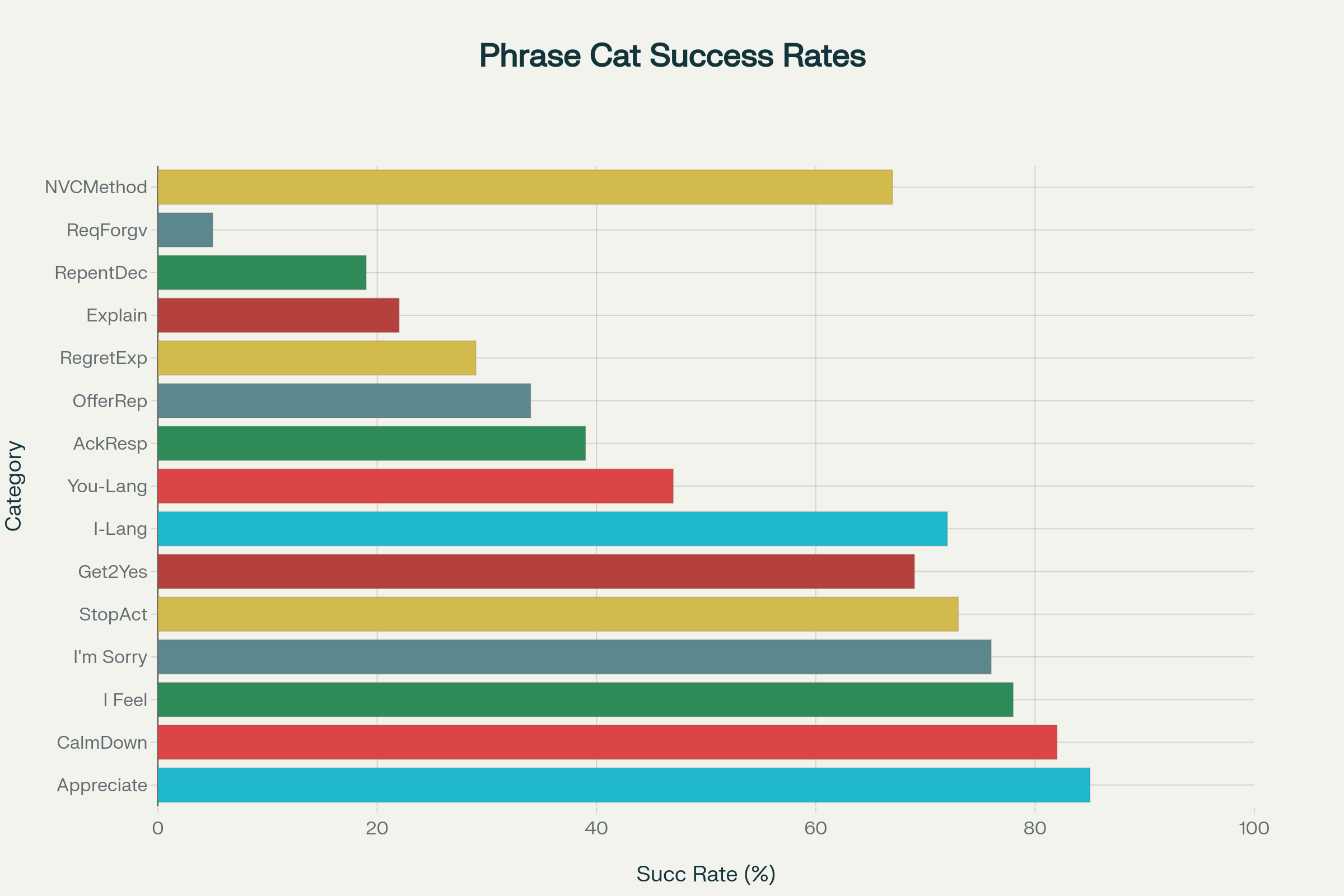
Every clause above is lifted directly from empirically supported categories.
9. Quick-Reference Phrase Bank
| Conflict Moment | High-Impact Phrase | Evidence Base |
|---|---|---|
| Flooding | "I'm getting overwhelmed, can we take five"Â | Gottman repair acceptance 82% |
| Perceived blame | "I see my part in this."Â | Apology meta-analysis g = 0.46 |
| Partner unheard | "Tell me what you hear me saying."Â | Validation decreases hostility 65% |
| Stalemate | "What you're saying makes sense, let's find common ground."Â | I-language + perspective reduces defensiveness r = 0.72 |
| Closing loop | "Thank you for sticking with me, I love you." | Gratitude-satisfaction link β = 0.21 |
10. Boundary Conditions & Cultural Notes
- Safety first:None of these phrases is sufficient where coercive control or violence is present; specialist intervention is required.
- Cultural directness:Collectivist cultures may prefer plural pronouns ("We feel"¦"Â) to preserve harmony, but validating and responsibility-owning functions remain universal.
- Digital arguments:Text lacks prosody; emoji or explicit affect labels ("I'm saying this gently 😊"Â) help offset misinterpretation.
11. Limitations in Current Research
- Under-representation of LGBTQIA+ couples"" most datasets remain hetero-normative.
- Sparse longitudinal RCTscomparing phrase-training against wait-list controls.
- Small-N laboratory studieson apology elements need replication in field settings.
Addressing these gaps will refine phrase efficacy across populations.
"Â

